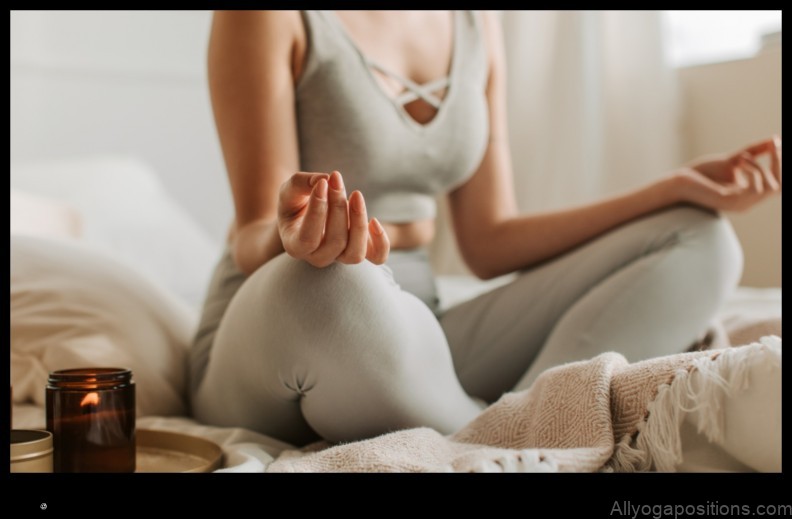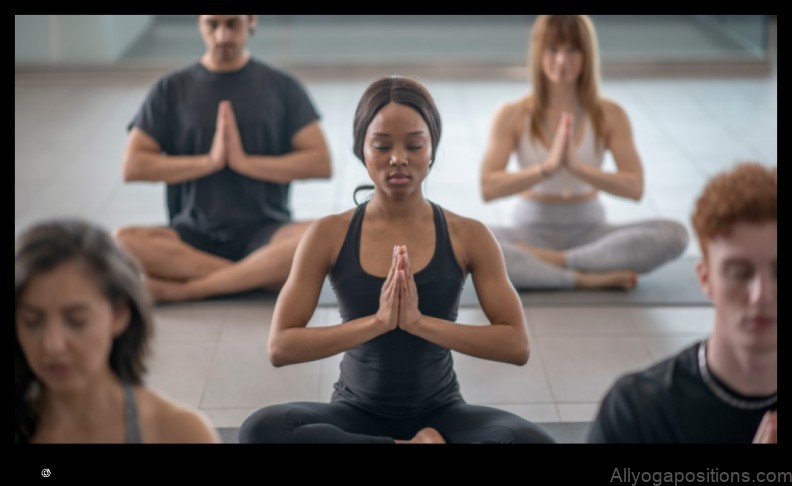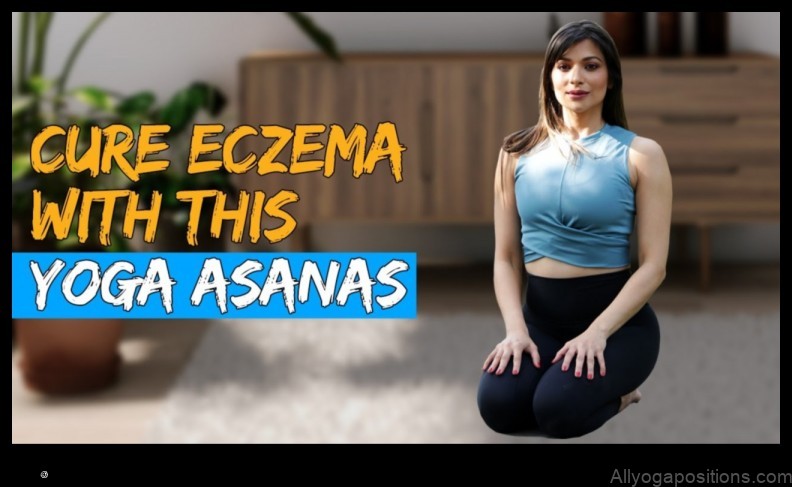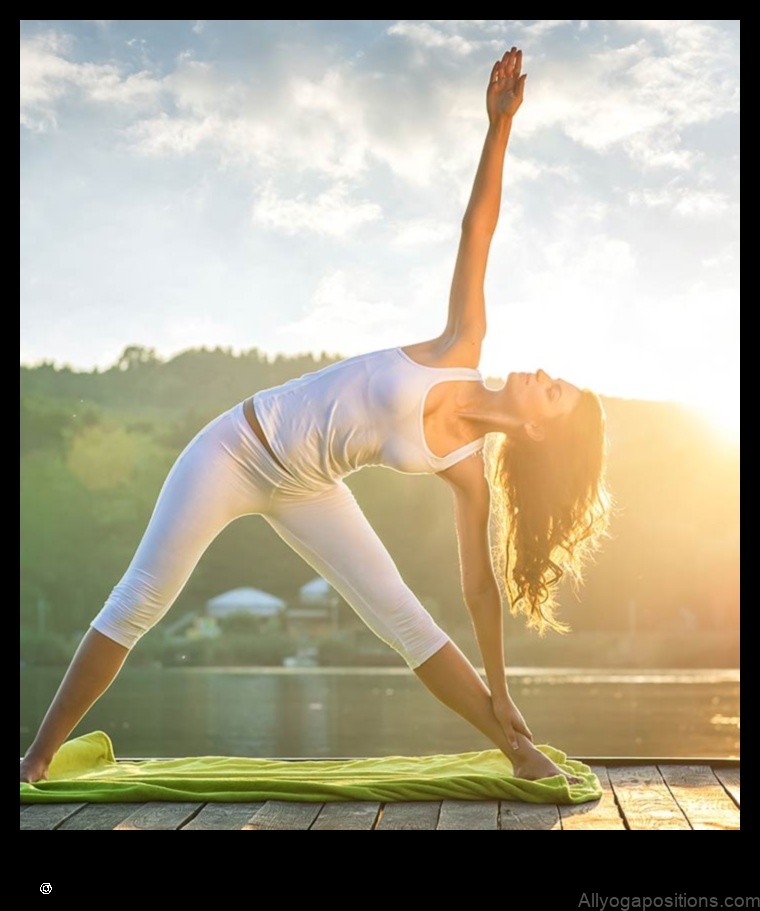
Yoga for Eczema Relief
Eczema is a chronic skin condition that causes inflammation, itching, and redness. It can affect people of all ages, but it is most common in children. There is no cure for eczema, but there are a number of treatments that can help to relieve symptoms. Yoga is one natural remedy that has been shown to be effective in reducing eczema symptoms.
Yoga can help to relieve eczema symptoms by reducing stress, improving circulation, and strengthening the immune system. When you practice yoga, you focus on your breath and body movements. This can help to calm your mind and body, which can reduce stress levels. Stress is a major trigger for eczema flares, so reducing stress can help to prevent or minimize eczema symptoms.
Yoga can also improve circulation and strengthen the immune system. When you practice yoga, you move your body in a variety of ways. This helps to improve circulation and lymphatic drainage, which can help to remove toxins from the body. Improved circulation can also help to deliver nutrients to the skin, which can help to improve its health and appearance.
Yoga is a safe and effective way to relieve eczema symptoms. It is a gentle exercise that can be modified to meet your individual needs. If you are interested in trying yoga for eczema relief, talk to your doctor or a qualified yoga instructor.

Benefits of Eczema Yoga
Yoga has a number of benefits for people with eczema, including:
- Reduces stress
- Improves circulation
- Strengthens the immune system
- Reduces inflammation
- Improves sleep
- Increases flexibility
- Promotes relaxation
How to Do Eczema Yoga
Yoga for eczema is a gentle form of yoga that is designed to relieve symptoms of eczema. It is a safe and effective way to improve your overall health and well-being.
To get started with eczema yoga, you will need to find a qualified yoga instructor who has experience working with people with eczema. Your instructor will be able to help you choose poses that are appropriate for your individual needs and to modify poses as needed.
Yoga for eczema is typically done in a warm, comfortable room. You will wear loose, comfortable clothing that allows you to move freely. You will also need a yoga mat or blanket to lie on.
Yoga for eczema typically consists of a series of gentle poses that are held for a few breaths each. The poses are designed to stretch and strengthen your muscles, improve your flexibility, and promote relaxation.
Yoga for eczema is a safe and effective way to relieve symptoms of eczema. It is a gentle form of yoga that can be modified to meet your individual needs. If you are interested in trying yoga for eczema relief, talk to your doctor or a qualified yoga instructor.

Yoga Poses for Eczema
There are a number of yoga poses that are specifically beneficial for people with eczema. These poses can help to reduce inflammation, improve circulation, and relieve stress.
Some of the best yoga poses for eczema include:
- Child’s pose
- Cat-cow pose
- Downward-facing dog pose
- Seated forward bend
- Pigeon pose
- Bridge pose
- Savasana (corpse pose)
These poses are all gentle and can be modified to meet your individual needs. If you are new to yoga, it is important to start slowly and gradually increase the length of time you hold each pose.
You should also listen to your body and avoid any poses that cause pain or discomfort.

Yoga Breathing Exercises for Eczema
Yoga breathing exercises can help to reduce stress and inflammation, which can both be triggers for eczema flares.
Some of the best yoga breathing exercises for eczema include:
- Breath of fire
- Ujjayi breath
- Sitkari breath
- Reduced inflammation
- Improved circulation
- Reduced stress
- Increased flexibility
- Improved sleep
- Start by practicing for a short period of time, such as 10 minutes. Gradually increase the length of your practice as you become more comfortable.
- Choose poses that are gentle and do not put strain on your joints.
- Listen to your body and avoid any poses that cause pain or discomfort.
- Stay hydrated by drinking plenty of water before, during, and after your practice.
- Practice yoga in a warm, comfortable environment.
- End your practice with a few minutes of relaxation.
- Child’s pose
- Cat/cow pose
- Downward-facing dog pose
- Pigeon pose
- Seated forward bend pose
- Supta virasana (reclining hero pose)
- Shavasana (corpse pose)
- Ujjayi breath
- Breath of fire
- Kapalbhati breath
- Sitkari breath
- Bhramari breath
- Breathing in through the nose and out through the mouth slowly and deeply.
- Holding the breath for a few seconds before exhaling.
- Repeating this breathing exercise for several minutes.
- Child’s pose
- Cat-cow pose
- Downward-facing dog pose
- Seated forward bend
- Savasana
- Reduced stress
- Improved sleep
- Increased flexibility
- Reduced pain and inflammation
- Improved circulation
- Talk to your doctor.
- Find a yoga class that is appropriate for people with eczema.
- Start slowly and gradually increase the intensity of your practice as tolerated.
- Listen to your body and stop if you experience any pain or discomfort.
- Start slowly and gradually increase the intensity of your practice as you feel comfortable.
- Choose poses that are gentle and do not aggravate your eczema.
- Listen to your body and stop if you feel pain or discomfort.
- Practice yoga in a warm, humid environment.
- Stay hydrated by drinking plenty of water before, during, and after your practice.
- Yoga for Emotional Healing Find Peace and Healing from PTSD
- Yoga for Cancer Patients 5 Mindful Practices to Promote Healing
- Yoga for Emotional Wellness Bach Flower Remedies for a Balanced Mind and Body
- Yoga for Emotional Balance Find Peace in the Chaos
- Meditation and Body Positivity A Guide to Nurturing Self-Love
Benefits of eczema yoga
Eczema yoga is a type of yoga that is specifically designed to help relieve the symptoms of eczema. It combines traditional yoga poses with breathing exercises and relaxation techniques. Eczema yoga can help to improve circulation, reduce inflammation, and relieve stress, all of which can help to improve eczema symptoms.
Some of the specific benefits of eczema yoga include:
Eczema yoga is a safe and effective way to help relieve the symptoms of eczema. It can be practiced by people of all ages and fitness levels. If you are interested in trying eczema yoga, talk to your doctor or a qualified yoga instructor.
3. How to do eczema yoga
Eczema yoga is a gentle form of yoga that is designed to help relieve the symptoms of eczema. It can be practiced at home or in a studio, and it is suitable for people of all ages and fitness levels.
Eczema yoga involves a series of poses that are designed to stretch and strengthen the body, improve circulation, and reduce stress. The poses are also designed to help you relax and connect with your breath.
When practicing eczema yoga, it is important to listen to your body and avoid any poses that cause pain or discomfort. You should also stay hydrated by drinking plenty of water before, during, and after your practice.
Here are some tips for practicing eczema yoga:
Eczema yoga can be a helpful way to relieve the symptoms of eczema. It can help to reduce inflammation, improve circulation, and reduce stress. If you are suffering from eczema, talk to your doctor about whether eczema yoga is right for you.
4. Yoga poses for eczema
There are many yoga poses that can help to relieve eczema symptoms. Some of the most beneficial poses include:
These poses can help to relieve eczema symptoms by reducing inflammation, improving circulation, and promoting relaxation.
It is important to listen to your body and modify poses as needed. If a pose is too painful or uncomfortable, stop and try a different one.
You can also try adding yoga breathing exercises to your practice. Yoga breathing exercises can help to reduce stress and anxiety, which can both contribute to eczema flare-ups.
Some of the most beneficial yoga breathing exercises for eczema include:
Yoga can be a great way to relieve eczema symptoms. By practicing yoga poses and breathing exercises, you can help to reduce inflammation, improve circulation, and promote relaxation. This can all lead to a reduction in eczema flare-ups.
5. Yoga breathing exercises for eczema
Yoga breathing exercises can help to relieve eczema symptoms by reducing inflammation, improving circulation, and promoting relaxation. Some of the most beneficial yoga breathing exercises for eczema include:
Yoga breathing exercises can be done at any time of day, but they are especially helpful when eczema symptoms are flaring up. Practicing yoga breathing exercises regularly can help to improve overall health and well-being, and can also help to reduce the risk of developing eczema in the first place.
6. Yoga lifestyle tips for eczema
Yoga can help to relieve eczema symptoms, but it is also important to make some changes to your lifestyle in order to get the best results. Here are some tips for living a healthy lifestyle that can help to improve your eczema:
Eat a healthy diet. Eating a diet rich in fruits, vegetables, and whole grains can help to improve your overall health and well-being, and it can also help to reduce inflammation. Avoid processed foods, sugary drinks, and unhealthy fats.
Get regular exercise. Exercise can help to improve your circulation and reduce stress levels, both of which can help to improve your eczema symptoms. Aim for at least 30 minutes of moderate-intensity exercise most days of the week.
Get enough sleep. When you are sleep-deprived, your body produces more of the stress hormone cortisol, which can worsen eczema symptoms. Aim for 7-8 hours of sleep per night.
Manage stress. Stress can trigger eczema flare-ups, so it is important to find ways to manage stress in your life. Try relaxation techniques such as yoga, meditation, or deep breathing exercises.
Take care of your skin. Use gentle, fragrance-free soaps and moisturizers to cleanse and moisturize your skin. Avoid harsh soaps and products that can irritate your skin.
Wear loose, comfortable clothing. Tight clothing can irritate your skin and make eczema worse. Wear loose, comfortable clothing that will not rub against your skin.
Avoid allergens and irritants. If you know what triggers your eczema, avoid those things as much as possible. Common triggers include dust mites, pet dander, pollen, and certain foods.
See a doctor if your eczema is severe. If your eczema is severe, you may need to see a doctor for treatment. Your doctor may prescribe medication or recommend other treatments to help you manage your symptoms.
7. Eczema yoga for children
Eczema is a common skin condition that can affect children of all ages. It can cause dry, itchy skin that can be painful and disruptive. Yoga can be a helpful way to relieve eczema symptoms in children. Yoga can help to reduce stress, improve circulation, and promote relaxation. It can also help to strengthen the immune system and improve sleep.
There are many different yoga poses that can be helpful for children with eczema. Some of the most beneficial poses include:
Yoga can also be combined with other natural remedies for eczema, such as essential oils, herbal teas, and diet changes. If you are interested in trying yoga to help your child with eczema, talk to your doctor or a qualified yoga instructor.
Eczema yoga for adults
Yoga can be a helpful complementary therapy for adults with eczema. It can help to reduce stress, improve sleep, and increase flexibility. Yoga poses can also help to relieve pain and inflammation, and improve circulation.
If you are considering trying yoga for eczema, it is important to talk to your doctor first. They can help you to determine if yoga is right for you and recommend a specific type of yoga practice.
There are many different types of yoga, and not all of them are appropriate for people with eczema. Some types of yoga, such as hot yoga, can be too stimulating for people with eczema. It is important to choose a type of yoga that is gentle and does not aggravate your symptoms.
Some of the specific benefits of yoga for adults with eczema include:
If you are interested in trying yoga for eczema, there are a few things you can do to get started.
Yoga can be a helpful complementary therapy for adults with eczema. It can help to reduce stress, improve sleep, and increase flexibility. Yoga poses can also help to relieve pain and inflammation, and improve circulation. If you are interested in trying yoga for eczema, talk to your doctor and find a yoga class that is appropriate for you.
Eczema Yoga for Seniors
Eczema is a common skin condition that can cause inflammation, itching, and dry skin. It can affect people of all ages, but it is more common in children and young adults. Eczema can be managed with a variety of treatments, including medications, lifestyle changes, and complementary therapies such as yoga.
Yoga is a mind-body practice that can help to relieve stress, improve circulation, and reduce inflammation. It can also help to strengthen the immune system and improve sleep. Studies have shown that yoga can be effective in reducing the symptoms of eczema, including itching, inflammation, and dry skin.
If you are a senior who is suffering from eczema, yoga can be a helpful way to manage your symptoms. Here are some tips for practicing yoga for eczema:
If you are interested in learning more about yoga for eczema, there are many resources available online and in your local community. You can also talk to your doctor or a qualified yoga instructor about how yoga can help you manage your eczema symptoms.
FAQ
Q: What is eczema yoga?
A: Eczema yoga is a type of yoga that is specifically designed to help people with eczema. It combines traditional yoga poses with breathing exercises and relaxation techniques to help relieve the symptoms of eczema.
Q: What are the benefits of eczema yoga?
A: Eczema yoga can help to relieve the symptoms of eczema, such as itching, redness, and inflammation. It can also help to improve sleep, reduce stress, and boost mood.
Q: How do I do eczema yoga?
A: You can find a variety of eczema yoga classes and videos online. You can also find books and DVDs that teach you how to do eczema yoga. It is important to start slowly and listen to your body. If you experience any pain or discomfort, stop the practice and consult with your doctor.
Table of Contents
